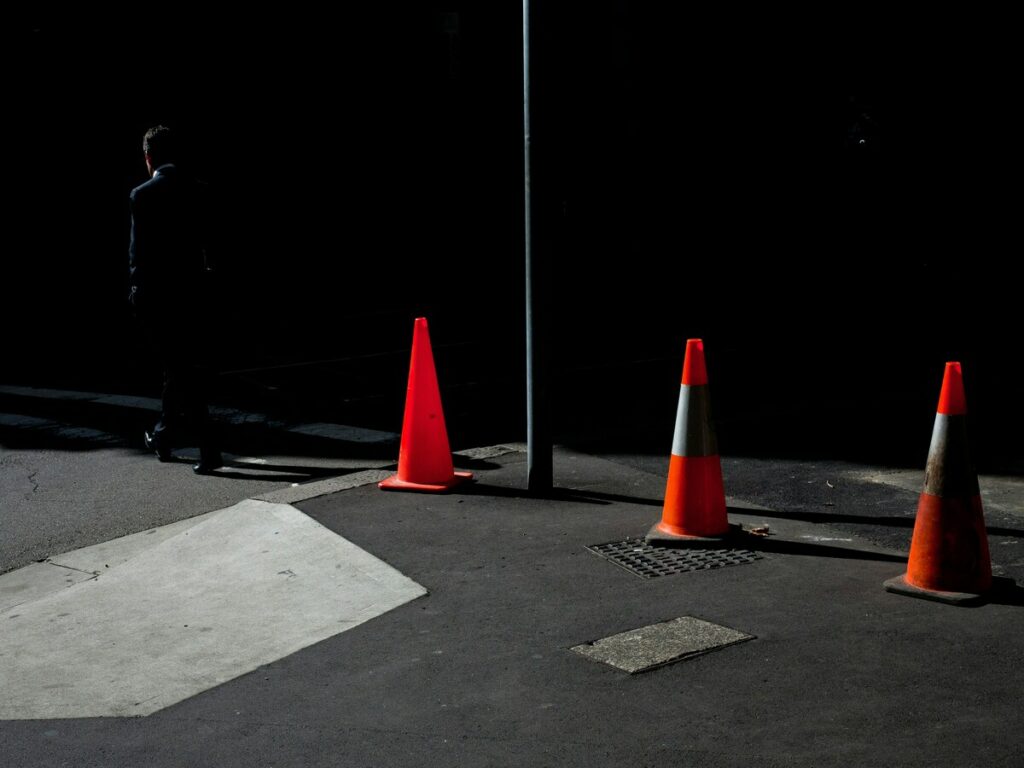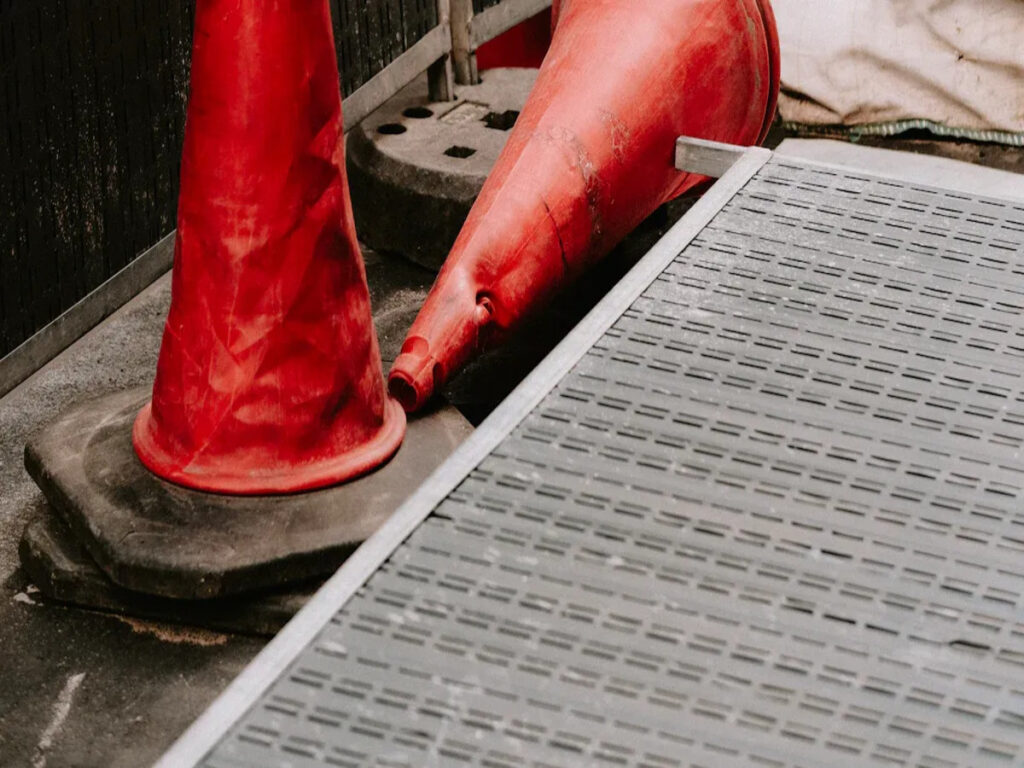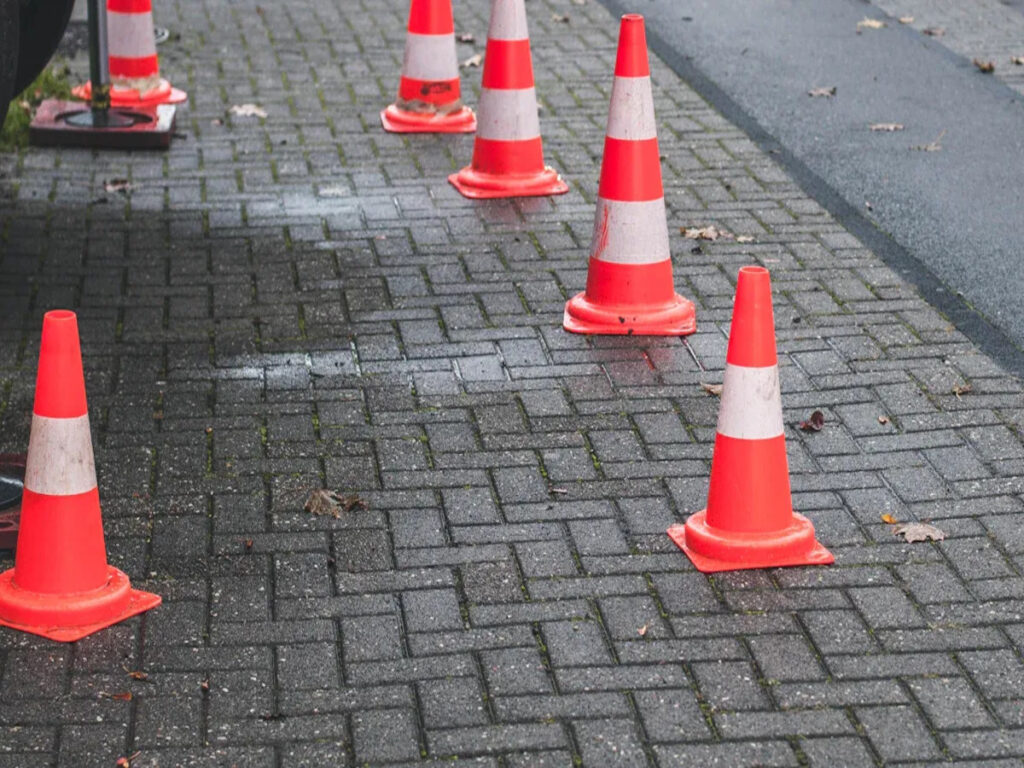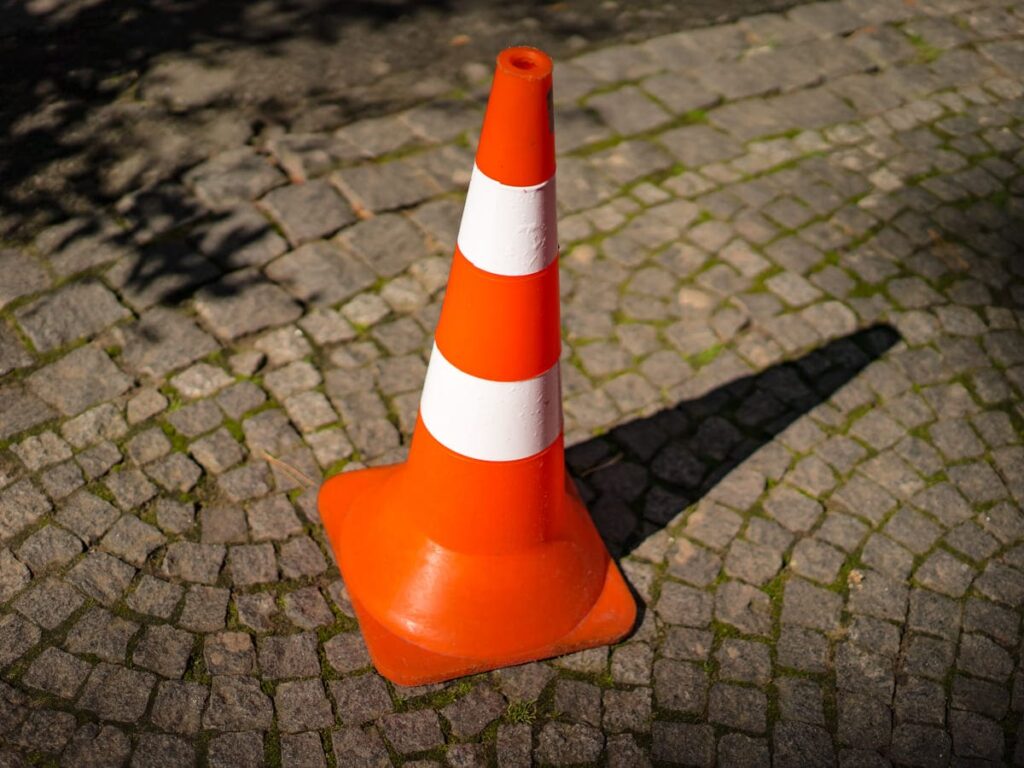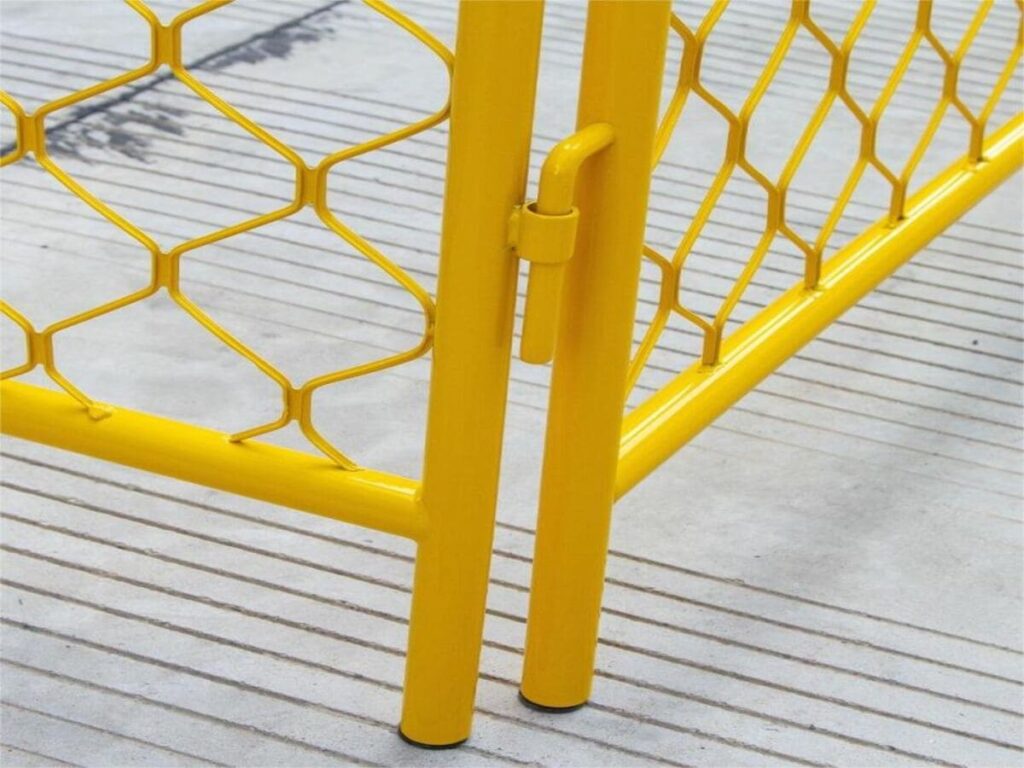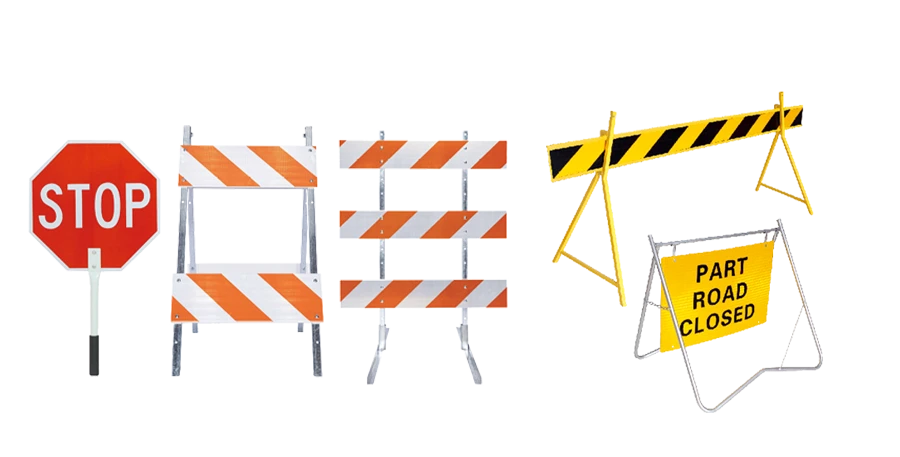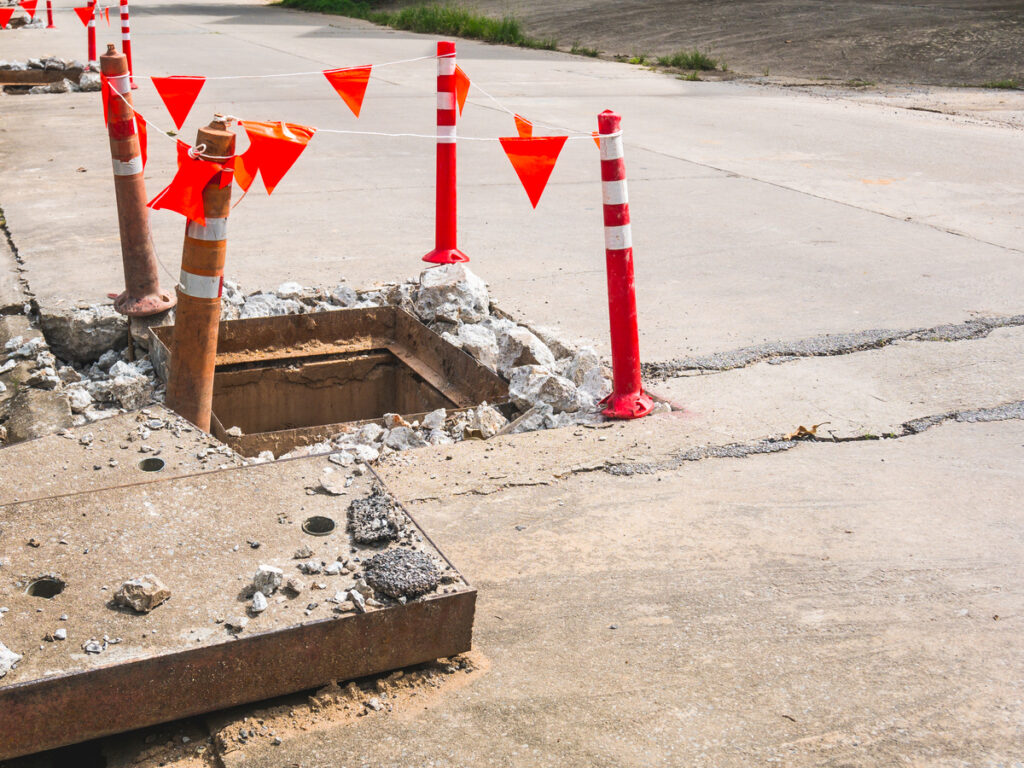
Safety flagging is very important for keeping workers and people safe in ppe places. Many workers have problems with durability and visibility, especially in dangerous spots. Weak tensile strength and quick wearing out can make things unsafe. New data shows how better safety flagging helps:
- A 2017 Missouri DOT study said 78% of drivers like automated flagging devices.
- In 2021, mehr als 900 people died and 42,000 got hurt in work zone crashes.
- Die Todesfälle in der Arbeitszone sind von gestiegen 63% seit 2010.
Stark, lang anhaltende, and easy-to-see solutions are still needed for construction sites, Ereignisse, Verkehrskontrolle, and emergency zones.
Bei OPTRAFFIC, Wir bieten an high-quality safety flagging designed to withstand tough environments. Our flagging is made from durable materials that provide strong tensile strength and resistance to wear, ensuring visibility and safety for workers in construction zones, road work areas, and high-traffic locations. Ob du brauchst reflective flagging for low-light conditions or Wetterresistente Materialien for harsh climates, OPTRAFFIC provides the tools you need to maintain a safe and secure work environment. Wählen OPTRAFFIC for durable, reliable safety solutions that keep workers and pedestrians protected.
Key Takeaways
- Pick strong materials like polyester and nylon for safety flagging. These materials do not tear easily. They last longer in hard places.
- Use bright colors and reflective designs to make flagging easy to see. This helps workers and drivers notice flagging. Es senkt die Wahrscheinlichkeit von Unfällen.
- Add smart technology to PPE. Sensors and alerts can warn workers about danger right away. This can stop injuries.
- Teach workers about safety rules and how to use flagging. Training helps everyone know why safety is important.
- Check and fix safety gear often. This finds damage early. It keeps flagging working well and safe.
Safety Flagging Applications in PPE
Construction and Traffic Control
Construction sites and traffic control use safety flagging to show danger and help people know where to go. Workers wear high-vis vests and other gear to stay safe. Safety flagging needs to be strong and last through bad weather. Dies hilft, Unfälle zu verhindern,. Good materials keep flagging from breaking in wind or rain. It is important for flagging to be easy to see, especially near cars and machines. Teams pick flagging that is tough and lasts a long time to keep everyone safe.
Event and Crowd Management
People who run events use ppe to help control crowds and make safe spaces. Bright vests and safety flagging show people where to go and keep them out of unsafe spots. Organizers pick flagging that does not tear or fade easily. This makes sure it works for the whole event. Gear and clear signs help stop confusion and keep people safe. Workers at events need strong and bright flagging to keep order and protect everyone.
PPE workers say they have some common problems:
- Stopping injuries from happening.
- Getting workers to care about safety.
- Some workers do not follow the rules.
- Making sure leaders support safety.
Emergency Response Zones
Emergency teams use safety flagging to mark danger and help people get to safety fast. Bright flagging and vests are very important in these times. The table below shows why high-visibility flagging is good in emergencies:
| Nutzen | Beschreibung |
|---|---|
| Verbesserte Sichtbarkeit | Bright clothes help drivers see flaggers and keep everyone safer. |
| Enhanced Safety for Workers | Flaggers help protect workers by moving traffic away from danger. |
| Unfallverhütung | Good flagging helps stop accidents in emergencies. |
Flagging must be strong and last in tough places. Emergency teams pick flagging that is hard to break and works well to keep everyone safe.
Safety Flagging Durability and Strength
Materialauswahl: Polyester, Nylon, Vinyl
Picking the right material is very important for safety flagging in the ppe industry. Polyester and nylon are strong and tough. These materials help flagging stay together and not rip or snap. The table below shows how strong polyester and nylon are when dry and wet:
| Material | Zugfestigkeit (trocken) | Zugfestigkeit (nass) |
|---|---|---|
| Polyester | 55–80 MPa | 50–70 MPa |
| Nylon | 75–95 MPa | 70–90 MPa |
Nylon is stronger than polyester, so it works well in hard places. Polyester does not stretch much and keeps its shape for a long time. Vinyl is used for short jobs, but it is not as strong as polyester or nylon. Teams need to think about what their site needs before picking a material.
Tear strength is also important for how long flagging lasts. The table below shows how nylon and polyester do in tear strength:
| Material | Tear Strength (warp) | Tear Strength (weft) |
|---|---|---|
| Nylon 600D Oxford | 95 N | 80 N |
| Polyester 600D Oxford | 78 N | 65 N |
Nylon 600D Oxford does not tear easily, so it lasts longer in busy places. Polyester 600D Oxford is also good and works well for many safety jobs.
Reinforced Edges and Stitching
Flagging with strong edges and stitching lasts longer and is tougher. Makers use double stitches and thick thread to stop fraying and ripping. These things help flagging stay strong when wind blows or when it rubs against tools.
Tipp: Reinforced grommets and eyelets help you put up flagging easily and stop it from ripping at the corners.
Teams in construction or emergency places like flagging with strong edges. This keeps the flagging in place and makes sure people see safety signs, Auch wenn das Wetter schlecht ist.
Weather and Abrasion Resistance
Safety flagging outside faces sun, Regen, Wind, and rubbing. The right material needs to fight these things to keep working well. The table below shows how different materials do in weather and rubbing, and how long they last outside:
| Material | Wetterwiderstand | Abrasion Resistance | Lifespan in Outdoor Environments |
|---|---|---|---|
| Lightweight Polyester | Not very strong, tears easily | Not good for rough places | Short life, best for quick jobs |
| 210D Polyester | Lasts okay outside | Bleibt stark | Medium life, good for many uses |
| 420D Polyester | Hard to tear, stands up to strong wind | Very tough | Long life, good for lots of use |
| High-strength Polyester | Made for long outdoor use | Handles lots of force | Very long life, good for tough places |
| Nylon | Can fade in sun unless treated | Tears easier | Medium life, good for places near water |
High-strength polyester is best for tough weather and lots of use. Nylon works well near water but can fade in strong sun unless treated. Teams should pick the right material for their weather to keep flagging easy to see and working well.
If flagging does not tear or wear out, it keeps marking danger and helps guide people safely. Good flagging lowers the chance of accidents and helps ppe gear work better in the field.
Maximizing Safety Flagging Visibility
Reflective and High-Contrast Designs
Reflective and high-contrast designs help keep workers and people safe. These designs make safety flagging easy to see from far away. They work well in dim light or at night. Reflective strips shine light back to drivers and workers. This makes the flagging stand out more. Bright colors like white and orange catch your eye fast.
The table below shows how these materials help people see better and lower accidents:
| Evidence Source | Ergebnisse |
|---|---|
| Ministerium für Verkehr und Hauptstraßen von Queensland | Class 1W retroreflective sheeting lets people see signs from over 300 meters at night, während der Klasse 2 signs are only seen from 90 Meter. |
| Unfallforschungszentrum der Monash University | Roads with bright and shiny signs had 25% fewer accidents than roads with faded signs. |
Reflective technology keeps getting better. New flagging uses sensors and LED lights to be easier to see. Some flagging glows after soaking up light. These new ideas help workers stay safe in different places.
Bright Colors and Backlit Options
Bright colors help people spot safety flagging during the day and at night. Rot, Gelb, and orange stand out in most places. Fluorescent colors, like yellow and red-orange, help people see flagging from farther away.
- Bright colors like shiny red, Gelb, and orange help people see flagging in dim light.
- Fluorescent yellow is seen most often, with an 88% detection rate.
- Fluorescent red-orange vests can be seen from 300 Meter entfernt, farther than other colors.
Backlit flagging adds even more visibility. LED -Leuchten and solar strips help flagging show up in dark or foggy spots. Flagging that glows in the dark uses special materials that soak up sunlight or lamp light. Some flagging changes color depending on the light around it. This helps workers see flagging in different lighting.
Tipp: Pick flagging with bright colors and backlit features for the best results in all kinds of light.
Tag- und Nachtaufführung
Safety flagging needs to work well both day and night. Sunlight can make faded colors hard to see during the day. Nachts, car lights and streetlights can cause glare or shadows. Flagging with bright colors and reflective strips helps fix these problems.
Bad weather and poor lighting make it hard to see flagging. Schnee, Nebel, and short days make it tough for drivers to spot flaggers and signs. The table below lists common problems and what they do:
| Herausforderung | Beschreibung |
|---|---|
| Reduzierte Sichtbarkeit | Regen, mist, or fog can hide road markings and signs. |
| Slippery Conditions | Flaggers can slip and fall more easily on wet ground. |
Workers need high-visibility PPE and outerwear to stay safe in these tough spots. Flagging that fights weather and rubbing stays easy to see and works well. Teams using new materials and technology keep workers safer, even when conditions are hard.
Enhancing PPE Performance with Smart Flagging
Integration with Wearable Technology
Smart safety vests and helmets use sensors to keep workers safe. These sensors can spot falls or sudden moves. They also notice unsafe places. The devices send alerts right away to workers and bosses. This helps stop injuries before they happen.
On a big job site, a helmet sensor felt a quick tilt. It sent a buzz to the worker. The worker fixed their balance and did not fall. This shows how wearable technology and safety flagging work together to keep people safe.
- Alerts sent in real time help stop accidents.
- Warnings can spot health risks like heat stress or tiredness.
- Devices like the Triax Spot-r Clip and smart helmets watch for danger and send alerts.
These tools make PPE stronger and safer by adding extra protection.
LED and Sensor Innovations
LED lights and sensors in safety flagging help people see better. Bright LEDs and shiny strips make flagging easy to spot day or night. Sensors can feel impacts or changes and send alerts to emergency teams.
- The Oro Valley Police used new tools and cleared incidents 32% Schneller.
- IoT systems with sensors and GPS can tell authorities after crashes. Tests showed teams responded 35% Schneller.
These new ideas help stop accidents and let teams act quickly. They also keep flagging strong and easy to see in tough places.
Customization and Branding
Companies can change safety flagging to fit their brand or site. Special colors, Logos, and messages help people know zones and rules. This makes safety clear and easy to follow.
Smart PPE can check equipment and do maintenance by itself. This helps meet safety rules and cuts down on lost time. Über fünf Jahre, using smart flagging and gear can save up to $660,000 and give back more than 100% on investment.
Smart PPE builds a system that fits workers and makes them more comfortable.
With smart tech, bright vests, und harte Materialien, teams can make PPE safer and work better everywhere.
Choosing the Right Safety Flagging for PPE
Material and Design Selection
Picking the right material for safety flagging helps keep people safe. Polyester and nylon are strong and do not tear easily. These materials work well on construction sites and in emergencies. Vinyl is good for short jobs but does not last long. Teams should use flagging with strong edges and double stitches. This helps flagging stay together in wind and when used a lot. Bright vests and colorful flagging make workers easy to see. Reflective strips help people see flagging when it is dark. Gear should match the dangers at each site. It is important to pick materials that can handle bad weather and lots of use.
Application-Specific Recommendations
Different places need different kinds of safety flagging. Construction sites need flagging that does not tear and can stand up to wind. Workers should wear bright vests to stay safe. Event managers should pick flagging that is light, stark, and easy to spot in crowds. Emergency zones need flagging that is very bright and hard to rip. Good signs and trained flaggers help keep everyone safe. Training programs like AWP Safety’s Safety Training and ATSSA Flagger Training teach workers how to use gear and stay safe.
| Training Program | Beschreibung |
|---|---|
| AWP Safety’s Safety Training | Teaches workers about safety |
| ATSSA Flagger Training | Shows flaggers how to do their job |
| OSHA-Required Safety Training | OSHA training for safety rules |
| Erste Hilfe & CPR Training | Teaches first aid and CPR for emergencies |
Industry Standards and Compliance
Following safety rules is very important for PPE workers. OSHA and ANSI make rules for how gear should be made and used. Diese Regeln helfen, die Arbeitnehmer vor Gefahr zu schützen. Teams must pick the right vests and flagging for each job. Expert Safety Services and DNOW give advice and sell gear that meets these rules. Mobile apps and safety classes help teams follow safety rules and work safely.
| Standard | Beschreibung | Impact on Product Selection |
|---|---|---|
| OSHA | Makes sure PPE is safe for work | Helps teams pick the right gear |
| Ansi | Sets rules for how PPE is made and used | Tells teams what gear to use for each job |
Tipp: Check safety rules often and ask experts for help to stay safe and follow the rules.
Safety flagging that is strong and easy to see helps stop accidents. PPE teams pick materials that last long and are tough. The table below shows rules and standards that help keep places safe:
| Evidenztyp | Beschreibung |
|---|---|
| High-Visibility Safety Apparel | Rules say workers should wear high-visibility safety clothes to be seen in dangerous places. |
| ANSI / ISES 107-1999 Standard | This rule tells how safety clothes should be made, like how much shiny material is needed so workers can be seen in different lights. |
Training and checking the workplace often helps teams use flagging the right way. Gute Schritte sind:
- Check the workplace to find unsafe spots and rule-breaking.
- Use new flagging slowly so work does not stop and people see how it helps.
- Teach workers and help them learn safety to make safety important.
New materials and smart tools make flagging stronger and more comfortable. The table below shows what is new:
| Trend | Beschreibung |
|---|---|
| Innovative Materials | Fabrics with graphene and special plastics protect better and feel lighter. |
| Ergonomic Designs | Better shapes and fits make gear more comfy and help workers do their jobs. |
| Smart Technologies | Sensors in PPE watch for danger and help keep workers safe. |
Teams that train workers and use better flagging make work safer and lower injuries.
FAQ
What materials work best for safety flagging in a construction zone?
Teams pick polyester or nylon for safety flagging. These materials do not tear easily and last a long time. They help workers stay safe and easy to see during work.
How do safety standards affect personal protective equipment selection?
Safety standards help teams pick the right gear. These rules make sure vests, Helme, and goggles protect well. They also help workers be seen better.
Why is high visibility important for top-quality protective equipment?
High visibility lets workers stand out in busy places. Good protective equipment uses bright colors and shiny strips. This helps stop accidents and keeps everyone safer.
Can goggles and helmets be used together with safety flagging?
Workers use goggles and helmets with safety flagging. This keeps eyes and heads safe from danger. It also helps teams follow safety rules at work.
How should teams maintain safety goggles for long-term use?
Teams should clean goggles after every use. They need to keep them in a dry spot. Checking goggles often helps find damage early. This keeps goggles safe and working well.

